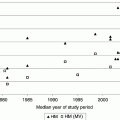Chapter 35 Quentin A. Hill1 and Amin Rahemtulla2 1 Department of Haematology, Leeds Teaching Hospitals NHS Trust, Leeds, UK 2 Department of Haematology, Imperial College Healthcare NHS Trust, Hammersmith Hospital, London, UK Haematological emergencies will often result in an unstable patient who requires intensive support. A number of these conditions have been dealt with in other chapters, but some additional topics are covered, including tumour lysis syndrome (TLS), superior vena cava (SVC) syndrome, chemotherapy- or radiotherapy-induced lung injury, malignant spinal cord compression (MSCC), renal failure following high-dose methotrexate, inadvertent administration of intrathecal vincristine and lymphoma with pericardial involvement. Tumour lysis syndrome is a life-threatening complication that arises when the rapid lysis of tumour cells leads to the release of intracellular cytokines, nucleic acids (catabolized to uric acid) and metabolites (phosphorus, potassium) into the circulation. This overwhelms the body’s normal homeostatic mechanisms resulting in hyperkalaemia, hyperphosphataemia, hyperuricaemia and secondary hypocalcaemia [1]. TLS can occur within a few hours or even before chemotherapy but is most commonly seen 12–72 h after initiation of treatment. It can result in renal failure, seizures, cardiac arrhythmia, multi-organ failure and death. Cairo and Bishop classified TLS according to clinical and laboratory features. In laboratory TLS [2], there is an abnormality in two or more of the metabolic complications below occurring within 3 days before or up to 7 days after chemotherapy: Clinical TLS was defined as laboratory TLS plus one or more of the following: Risk factors: The best management of this condition is prevention, and ensuring good hydration and urine output is central to this. The initial assessment of all newly presenting patients should include tumour type, burden and cell lysis potential. Also, review the WBC, LDH, uric acid, phosphate, potassium, calcium, creatinine, urine output and cardiovascular status. Patients who do not already have clinical TLS can then be categorized into low, intermediate and high risk. Several expert groups recently constructed algorithms defining risk and recommending a risk-stratified management approach to TLS [1, 3] (Table 35.1). Table 35.1 Tumour lysis syndrome (TLS) recommendations based on TLS risk. Source: Cairo et al. [3]. Reproduced with permission of John Wiley & Sons, Ltd. ST, solid tumours; MM, multiple myeloma; CML, chronic myeloid leukaemia; NHL, non-Hodgkin’s lymphoma; HL, Hodgkin’s lymphoma; CLL, chronic lymphoid leukaemia; AML, acute myeloid leukaemia; WBC, white blood cell count; LDH, lactate dehydrogenase; ULN, upper limit of normal; ALCL, anaplastic large cell lymphoma; N/A, not applicable; ALL, acute lymphoblastic leukaemia; BL, Burkitt lymphoma/leukaemia; LL, lymphoblastic lymphoma. aRare ST, such as neuroblastoma, germ cell tumours and small cell lung cancer or others with bulky or advanced stage disease, may be classified as IRD. bCLL treated with fludarabine and rituximab, and/or those with high WBC (≥50 × 109/L) should be classified as IRD. cContraindicated in patients with a history consistent with glucose-6-phosphate dehydrogenase deficiency (G6PD). In these patients, rasburicase should be substituted with allopurinol. Preventative strategies for high-risk patients: Prevention for moderate-risk patients should include adequate hydration with IV fluids. Hospital in-patient, monitoring of urine output is recommended with biochemical monitoring, initially every 12 h. Allopurinol should be started 1–2 days before treatment and continue for 3–7 days afterwards. Allopurinol can be given orally or IV at a dose of 300 mg/m2/day (maximum 600 mg/day) in one to three divided doses [4]. Dose reductions for renal or liver impairment are required. Low-risk patients are usually managed on an outpatient basis, and hydration can be achieved orally. Urinary alkalinization (e.g. with sodium bicarbonate) has been used to increase excretion of uric acid but decreases calcium phosphate solubility and lacks evidence of benefit. It is no longer recommended and should be avoided in established TLS, if rasburicase has been used or phosphate elevated. Established TLS:
Haematological Emergencies
Tumour lysis syndrome (TLS)
Diagnosis
Uric acid
≥476 µmol/L or 25% increase from baseline
Potassium
≥6.0 mmol/L or 25% increase from baseline
Phosphate
≥1.45 mmol/L or 25% increase from baseline
Corrected calcium
≤1.75 mmol/L or 25% decrease from baseline
Pathophysiology and clinical manifestations:
Management
Low-risk disease (LRD)
Intermediate-risk disease (IRD)
High-risk disease (HRD)
STa
N/A
N/A
MM
N/A
N/A
CML
N/A
N/A
Indolent NHL
N/A
N/A
HL
N/A
N/A
CLLb
N/A
N/A
AML and WBC <25 × 109/L and LDH <2 × ULN
AML with WBC 25–100 × 109/L
AML and WBC <25 × 109/L and LDH ≥2 × ULN
AML and WBC ≥ 100 × 109/L
Adult intermediate-grade
NHL and LDH <2 × ULN
Adult intermediate-grade NHL and LDH ≥2 × ULN
N/A
Adult ALCL
Childhood ALCL stage III/IV
N/A
N/A
Childhood intermediate-grade NHL stage III/IV
with LDH <2 × ULN
N/A
N/A
ALL and WBC <100 × 109/L and LDH <2 × ULN
ALL and WBC ≥100 × 109/L and/or LDH ≥2 × ULN
N/A
BL and LDH <2 × ULN
BL stage III/IV and/or LDH ≥2 × ULN
N/A
LL stage I/II and LDH <2 × ULN
LL stage III/IV and/or LDH ≥2 × ULN
N/A
N/A
IRD with renal dysfunction and/or renal
involvement
IRD with uric acid, potassium and/or phosphate > ULN
Prophylaxis recommendations
Monitoring
Monitoring
Monitoring
Hydration
Hydration
Hydration
±Allopurinol
Allopurinol
Rasburicasec
Stay updated, free articles. Join our Telegram channel

Full access? Get Clinical Tree






